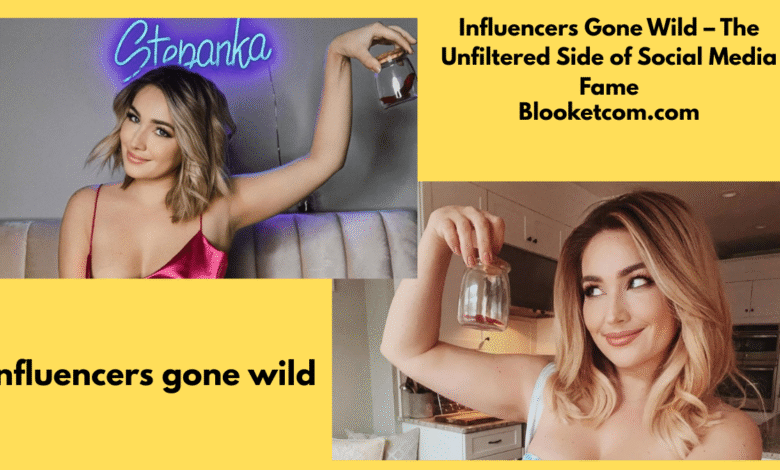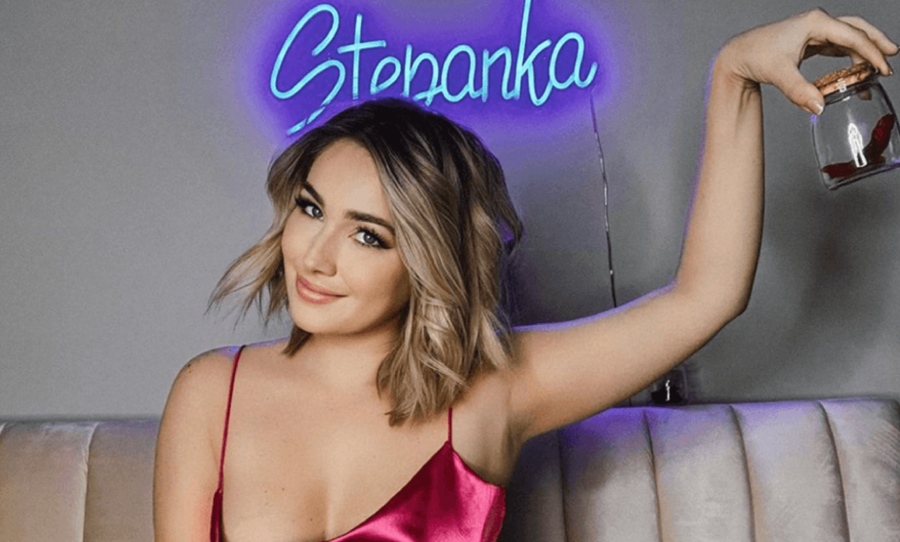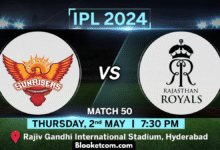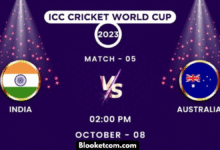Influencers Gone Wild – The Unfiltered Side of Social Media Fame

The Rise of the influencers gone wild Culture
Social media influencers gone wild are now more than just digital personalities. They’ve evolved into powerhouses of modern culture, commanding audiences larger than some news networks and shaping public opinion with a single tweet or Instagram post. The term “influencer” wasn’t even part of mainstream vocabulary a decade ago, and now it’s a legitimate career path, bringing with it fame, fortune, and sometimes—chaos.
What started as a trend with bloggers and YouTubers has transformed into a full-blown industry. Platforms like Instagram, TikTok, and YouTube turned ordinary people into celebrities almost overnight. Their influence ranges from fashion and fitness to politics and even public health. The ability to connect directly with followers makes them seem more relatable than traditional celebrities, which only amplifies their impact.
But this booming rise has not come without its own set of complications. As the pressure to stay relevant intensifies, more influencers gone wild are pushing boundaries, breaking societal norms, and in some cases—spiraling out of control. The result? A new cultural phenomenon: Influencers Gone Wild.
When the Filters Drop: Real Life Behind the Glam

To their audiences, influencers gone wild live a dream life filled with designer clothes, luxury vacations, and flawless skin. But behind the carefully curated grid is often a very different reality. The pressure to constantly perform and share can take a massive toll on mental health. When the camera is off, many influencers struggle with anxiety, depression, or burnout.
There’s also the issue of authenticity. As followers begin to see through overly polished posts, influencers gone wild feel the need to shock or push boundaries to stay relevant. Some start oversharing, airing personal dramas online. Others get involved in stunts that blur the line between entertainment and irresponsibility.
As a result, we often see viral moments where influencers gone wild behave erratically—whether it’s public meltdowns, reckless challenges, or controversial opinions. These incidents can lead to “cancellation,” a public shaming process that ironically can increase their visibility rather than reduce it.
From Fame to Infamy: Wild Moments That Broke the Internet
The internet has a short memory, but some influencers gone wild scandals are unforgettable. From fake charity promotions to tone-deaf vacation posts during crises, influencer missteps are often magnified due to their massive online presence. What would be a minor faux pas for a regular person becomes international news when a well-known content creator is involved.
One example includes influencers who ignored COVID restrictions to party abroad, flaunting their trips while the world struggled. Another involves YouTubers who staged pranks so outrageous they ended up with legal consequences. Others have been exposed for buying followers, plagiarizing content, or promoting harmful products.
These “influencers gone wild” moments not only damage reputations but also question the very foundation of influencer culture. Is it built on authenticity, or is it just another form of entertainment with hidden scripts and backroom deals?
The Psychology of Going Viral
Going viral is the modern equivalent of winning the lottery. It brings instant fame, money, and a dopamine rush that’s addictive. influencers gone wild often chase virality, sometimes knowingly courting controversy. The internet rewards extremes—extreme beauty, wealth, behavior, or drama. It’s no surprise that influencers adopt personas that fit those molds.
But the pursuit of virality can be a dangerous game. To stand out in an oversaturated market, influencers may engage in risky behavior—from jumping off cliffs for the perfect photo to engaging in online feuds to boost engagement. This behavior is often encouraged by algorithms that favor content with high emotional reactions, even if it’s outrage.
Psychologists note that this constant need for validation can lead to narcissistic tendencies and even social media addiction. It becomes a cycle: post, react, analyze, repeat. And once that cycle breaks—if engagement drops or criticism rolls in—some influencers spiral into panic mode, resulting in the very wild behavior we so often see trending.
The Role of Platforms: Enablers or Regulators?
Social media platforms have a dual role. They enable influencers by providing the tools and reach necessary to build their brand. But they also hold the power to regulate content. Unfortunately, the rules are often vague, inconsistently enforced, or based more on public backlash than clear policy.
While platforms like Instagram or TikTok occasionally ban accounts or remove content, it often comes after significant public outcry. This lag in enforcement allows “wild” behavior to trend and spread before it’s taken down. In some cases, these incidents help platforms gain user engagement, blurring ethical boundaries.
Content moderation is tricky. Too much control stifles creativity and freedom of speech; too little leads to misinformation and exploitation. Many influencers have learned to play the game—pushing just hard enough to stay on the right side of the algorithm, but controversial enough to stay in headlines.
Brands and Sponsorships: The Money Behind the Madness

Influencers aren’t just internet personalities—they’re businesspeople. Many make their income through brand sponsorships and affiliate marketing. However, when influinfluencers gone wild ncers “go wild,” it can jeopardize their financial relationships. Brands don’t want to be associated with scandal, and many drop influencers at the first sign of controversy.
But paradoxically, some brands seek out controversy as a way to go viral themselves. They partner with edgy influencers or jump on trending moments to get attention. This fuels a system where bad behavior can be profitable, encouraging influencers to keep pushing boundaries.
It’s a delicate balance. Some influencers gone wild clean up their act to remain brand-friendly, while others embrace the chaos and build a following that thrives on unpredictability. Either way, money remains a major motivator.
Legal Trouble and Public Backlash
With great power comes great responsibility—and occasionally, lawsuits. influencers gone wild are increasingly facing legal consequences for their actions, from defamation to fraud. Some have been sued over failed business deals or accused of misleading followers with false advertising.
Public backlash can be just as damaging. Social media users are quick to “cancel” those who cross the line, and the fallout can be swift. Lost deals, mass unfollows, and viral takedowns are part of the Vinfluencers gone wild landscape.
While some bounce back stronger than ever, others fade into obscurity. The audience ultimately decides whether an influencer’s wild behavior is forgivable—or unforgivable.
Redemption Arcs: Comebacks and Rebranding
In the world of influencers, all is rarely lost. Many who’ve gone wild eventually stage a comeback. Whether it’s through a heartfelt apology, a mental health break, or a full-blown rebrand, redemption arcs are almost expected. Some influencers even monetize their comeback stories through YouTube documentaries, podcasts, or exclusive interviews.
The public has a short memory, and audiences often root for redemption. As long as the influencer shows growth or reinvention, they can rebuild their brand. In some cases, the controversy becomes a pivotal moment that redefines their career.
This cycle of rise, fall, and redemption is now part of influencers gone wild culture. It reflects not just the pressures influencers face, but also the hunger of audiences for drama, authenticity, and transformation.
Influencer Gone Wild: A Symptom or a Trend?
So what do all these stories mean? Are influencers gone wild simply out of control, or are they symptoms of a much larger societal trend? The answer may be both. We live in a culture that celebrates visibility and engagement above all else. The more outrageous the content, the more eyes it draws.
Influencers aren’t necessarily wild by nature—they’re products of a system that incentivizes extremes. Platforms, followers, and brands all contribute to the environment where wild behavior is not only expected but rewarded. Until that system changes, we’ll likely continue seeing influencers gone wild go off-script in increasingly dramatic ways.
In a way, “influencers gone wild” is not the problem—it’s the proof. Proof that we’ve blurred the lines between entertainment, reality, and identity in ways we’ve never seen before.
Conclusion: The Future of Influencing
Where do influencers gone wild go from here? With increasing scrutiny, evolving platforms, and smarter audiences, the influencer world is at a crossroads. Those who adapt, stay authentic, and understand their audience will thrive. Those who rely on shock value may eventually burn out.
influencers gone wild have the power to drive culture, spark movements, and shape opinions. With that power comes a responsibility to their followers—and themselves. Going wild might get you noticed, but staying grounded is what builds lasting legacy.
Ultimately, the influencer industry will need to mature. That means more transparency, accountability, and perhaps, a shift in how we define influence itself. Fame is easy. Trust, however, is earned.
FAQs
1. What does “influencers gone wild” mean?
It refers to social media influencers gone wild behaving in erratic, controversial, or irresponsible ways, often for attention or virality. This includes scandals, feuds, stunts, or inappropriate content.
2. Why do influencers go “wild” on social media?
The pressure to stay relevant and viral often drives influencers to push boundaries. Some do it for shock value, others due to personal struggles, and many because it keeps their audience engaged.
3. Can influencers gone wild recover from public backlash?
Yes. Many influencers gone wild bounce back after controversies by issuing apologies, rebranding, or taking a break. Some even grow more popular after a scandal if they handle it well.
4. How do brands respond to influencers gone wild involved in scandals?
Most brands distance themselves to protect their reputation. However, some controversial influencers still attract niche brands that thrive on edginess.
5. Are social media platforms doing enough to regulate influencers gone wild?
It varies. Platforms have community guidelines, but enforcement is often inconsistent. Some critics argue platforms enable wild behavior by rewarding viral content regardless of its impact.

